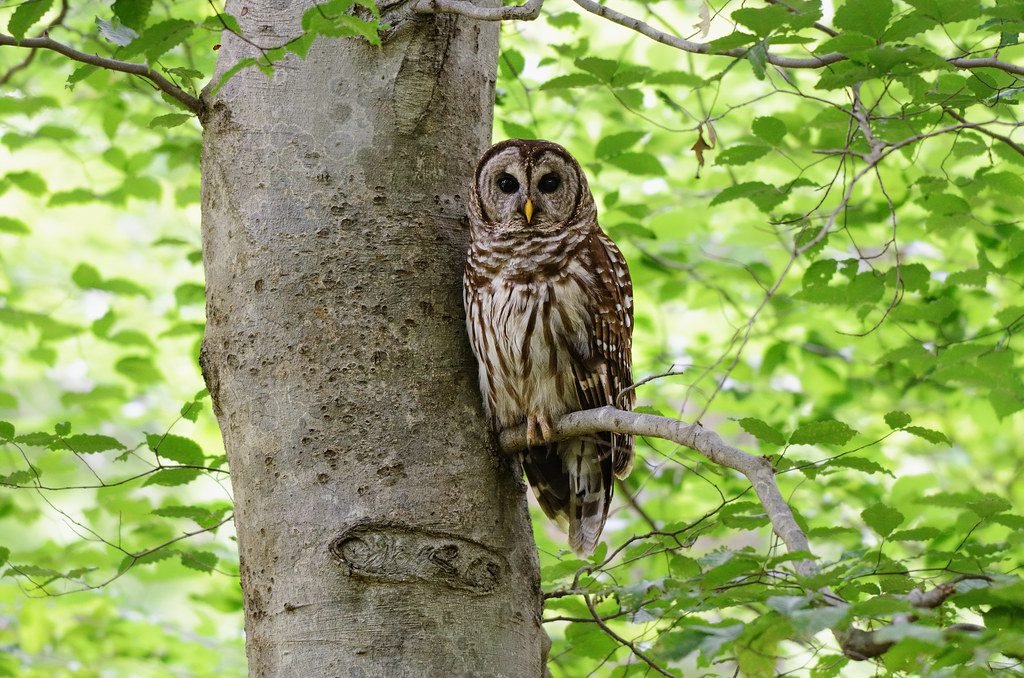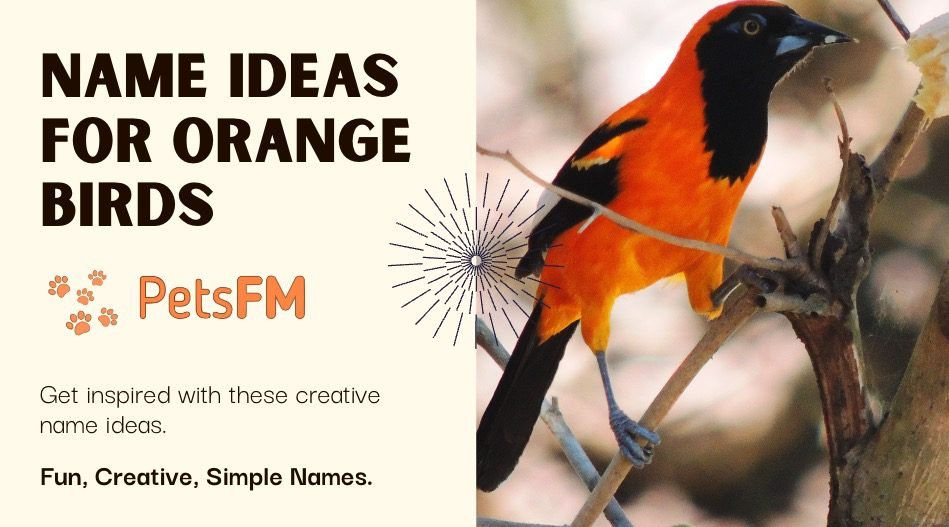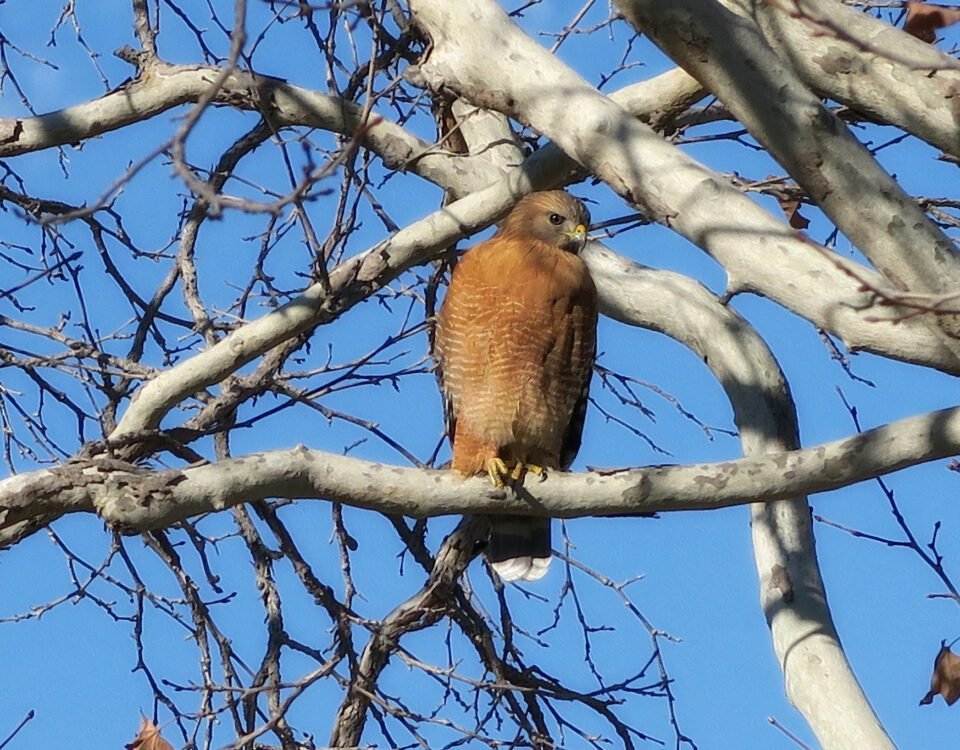


100+ Bird Names In Tamil With Translation in English [UPDATED]
October 9, 2023


Are Birds Color Blind? How Birds See Colors
October 9, 2023In the heart of Japan, a language soaked in tradition and poetic resonance unfolds, revealing the nation’s deep relationship with nature. Japanese, as rhythmic and fluid as the landscapes it describes, has always respected the birds that grace its skies.
These avian wonders, celebrated both for their ethereal beauty and provocative songs, occupy a cherished niche in Japanese literature, folklore, and daily life. They’re not just fleeting guests of the sky-blue heavens; they’re narrators of ancient tales, symbols of seasons, and signs of aspirations.
Join us as we journey through the various bird names in Japanese, unveiling their English translations and the stories they hold in Japan’s age-old narratives.
100+ Bird Names In Japanese
The following are 100 bird names with their Japanese translations. However, the Japanese language might have multiple terms for a specific bird based on various factors like species or context. The names provided above are commonly used representations.
1: Sparrow (スズメ | Suzume)
A small bird, suzume’s cheerful chirps brighten both cities and the countryside, bringing joy to all who hear them.
2: Peacock (孔雀 | Kujaku)
Kujaku flaunts vibrant colors, becoming the embodiment of elegance and the heart of avian beauty.


Green Parrot
3: Pigeon (鳩 | Hato)
Hato is peaceful and calming everywhere, often linked with harmony and unity.
4: Crow (烏 | Karasu)
Karasu, ever-present and alert, symbolizes adaptability, thriving in varied environments.
5: Parrot (鸚鵡 | Ōmu)
Bright and talkative, ōmu are loved companions, filling rooms with lively conversations.
6: Eagle (鷲 | Washi)
Dominating the skies, Washi stands for strength and precision, catching prey flawlessly.
7: Owl (梟 | Fukurō)


Owl on a Tree
Guardian of the night, fukurō is often linked to wisdom and mystical tales.
8: Kingfisher (翡翠 | Kāwāsemi)
With its swift dives, kāwāsemi skillfully captures fish, captivating those who watch.
9: Woodpecker (啄木鳥 | Kitsutsuki)
Kitsutsuki, with its tree-tapping rhythm, supports forest health and life.
10: Crane (鶴 | Tsuru)
Tsuru dances gracefully in wetlands, its elegant moves mesmerizing viewers.
11: Duck (鴨 | Kamo)
Floating calmly on water, Kamo is known for its soft quacks and funny walks.
12: Swan (白鳥 | Hakuchō)
Hakuchō, with its pure beauty, has inspired countless tales of love and grace.
13: Cuckoo (鵯 | Hiyodori)
Come spring, hiyodori’s sweet songs spread warmth and happiness in the air.
14: Myna (マイナ | Maina)
Maina, a city regular, delights with its bold songs and lively nature.
15: Dove (鳩 | Hato)
Hato, with its gentle calls, symbolizes hope, love, and world peace.
16: Vulture (禿鷲 | Hakutōwashi)
Vital for nature’s balance, hakutōwashi clears away the deceased, keeping areas clean.
17: Quail (うずら | Uzura)
Elusive uzura hides in grasses and is recognized by its melodic, unique songs.
18: Falcon (隼 | Hayabusa)
Majestic Hayabusa is known for its quick flights and skilful hunting.
19: Heron (鷺 | Sagi)
Sagi stands tall by the waters, patiently waiting, then striking its prey swiftly.
20: Penguin (ペンギン | Pengin)
Pengin, graceful in the water, amuses on land with its cute waddle.


21: Flamingo (フラミンゴ | Furamingo)
Renowned for their pink elegance, furamingos stand out in marshlands, balancing gracefully on one leg.
22: Canary (カナリア | Kanaria)
Small yet vibrant, kanarias enchant with their melodious chirps, making them a favorite among bird enthusiasts.
23: Hummingbird (ハミングバード | Hamingubādo)
With wings aflutter, hamingubādos dance near flowers, sipping nectar in an aerial ballet.


24: Ostrich (ダチョウ | Dachō)
Africa’s flightless wonder, dachō, may not fly but astonish with their unmatched land speed.
25: Hawk (タカ | Taka)
Takas dominate the sky with a keen gaze, diving swiftly to capture their unsuspecting prey.


Also, Read: Why Do Birds Attack Hawks? Know The Actual Truth!
26: Magpie (カササギ | Kasasagi)
Contrasting in color, kasasagis are curious birds known to collect shiny trinkets.
27: Raven (カラス | Karasu)
Larger than crows, karasus echo the wild with deep calls, symbolizing the vastness of nature.


28: Partridge (ウズラ | Uzura)
Solid and grounded, uzuras fill the wilderness with distinct calls, marking their presence.
29: Pelican (ペリカン | Perikan)
Spotting a perikan with their large bill pouch is easy, as they skillfully scoop fish from the waters.
30: Finch (フィンチ | Finchi)
Bright and lively, finchis serenade gardens with their spirited songs, adding zest to nature.
31: Kite (トビ | Tobi)
Majestically soaring, tobis are noticeable with their V-tails, often circling urban skylines.
32: Lark (ヒバリ | Hibari)
Known for skyward flights, hibaris sing melodiously, becoming muses for many artists.
33: Swift (アマツバメ | Amatsubame)
Famed for speed, amatsubames dart through the sky, nesting high in urban landscapes.
34: Nightingale (ウグイス | Uguisu)
Enshrined in legends, uguisus mesmerized with twilight tunes, giving voice to many a silent night.
35: Cockatoo (オウム | Ōmu)
From Australia, ōmus impress with colorful crests and their ability to mimic various sounds.
36: Albatross (アホウドリ | Ahōdori)
Oceanic giants, ahōdoris, display vast wingspans, enabling them to glide effortlessly over sea expanses.
37: Starling (ムクドリ | Mukudori)
Famed for sky dances, mukudoris gather in large flocks, painting the sky with synchronized motions.
38: Moorhen (ムーアヘン | Mūāhen)
Commonly seen near water, mūāhen sport bright red beaks and facial shields, making them stand out amidst greenery.
39: Jackdaw (ジャクドー | Jakudō)
With their distinct grayish heads, jakudō, part of the crow lineage, are curious and are often seen in playful maneuvers.
40: Tern (ターン | Tān)
Majestic sea aviators, tān demonstrate exceptional diving skills, seamlessly plunging into the water to capture their fish prey.
41: Robin (ロビン | Robin)
Known for its vibrant orange breasts, robins are often associated with the onset of winter in many Western traditions and are a common feature on festive cards.
42: Seagull (カモメ | Kamome)
Distinguished by their signature cries, Kamome are predominantly coastal birds but have adapted well to urban settings.
43: Toucan (トウカン | Tōkan)
Sporting a large, colorful beak, tōkan are a mesmerizing sight in the rainforests of South America.
44: Pheasant (キジ | Kiji)
Kiji are ground-dwelling birds with a rich variety of plumage. Historically, they have been associated with hunting traditions.
45: Ibis (イビス | Ibisu)
Revered in ancient Egyptian culture, ibisu used their long, curved beaks to forage in wetlands and muddy terrains.
46: Rook (ルーク | Rūku)
Often found around farmlands, rūku are social birds. Their bare faces make them easily identifiable in a group.
47: Bunting (ブンティング | Buntingu)
Small yet musical, buntingu captivate with their bright colors, making them a prized sighting for bird enthusiasts.
48: Cormorant (ウ | U)
Known for their unique sunbathing pose with wings spread wide, they’re adept divers, fishing from the depths with ease.
49: Curlew (クルル | Kururu)
Defined by their long, curved beaks, kururu elegantly forage in marshy areas, probing the mud for hidden morsels.
50: Grouse (ライチョウ | Raichō)
Inhabitants of colder terrains, raichō possess intricately patterned feathers that camouflage them perfectly against snowy grounds.
51: Chiffchaff (チフチャフ | Chifuchafu)
Known for their distinct songs, chifuchafu flit through the foliage, serenading their surroundings with musical notes.
52: Goldfinch (ゴールドフィンチ | Gōrudo finchi)
Brightening their habitat with striking plumage, gōrudo finchi’s songs are a harmonious addition to nature’s chorus.
53: Barn Owl (ホーホー | Hōhō)
Frequenting old structures, the hōhō, with its ghostly appearance and eerie calls, symbolizes the night’s mysteries.
54: Hoopoe (ホオダレ | Hōdare)
Unique for their fan-like crests and patterned wings, hōdare scour the earth with their long beaks for sustenance.
55: Osprey (ミサゴ | Misago)
Powerful birds of prey, misago dive into water bodies, snatching fish with incredible accuracy, their distinctive eye markings setting them apart.
56: Chough (チャフ | Chafu)
Glossy blackbirds, chafu are notable for their bright red beaks and feet, standing out in stark contrast against rugged terrains.
57: Wheatear (ウィーター | Wītā)
Distinguished by their appearance, wītā are known for their swift tail movements, reminiscent of gentle ocean waves.
58: House Sparrow (スズメ | Suzume)
Ubiquitous in urban areas, suzume, and their familiar chirps have become an integral part of city life’s soundscape.
59: Bulbul (ブルブル | Buruburu)
Typically found in Eastern regions, Buruburus are celebrated for their musical calls, influencing various forms of art and poetry.
60: Laughing Dove (ワライバト | Waraibato)
Known for their continuous, laughter-like cooing, the gentle waraibato adds a serene soundtrack to tranquil mornings and evenings.
61: Roller (ローラー | Rōrā)
Blue and brown birds. They like to sit high and watch.
62: Wood Pigeon (森のハト | Mori no Hato)
Big pigeons. They look for fruits and seeds in forests.
63: Avocet (アヴォセット | Avosetto)
Black and white birds with curved bills. They look for small food in the water.
64: Sandgrouse (砂の鳥 | Suna no Tori)
Desert birds. They can hold water in their feathers and drink at oases.
65: Pallid Swift (白い燕 | Shiroi Tsubame)
Birds with light bellies and half-moon wings. They nest on cliffs.
66: Common Grackle (普通のクロウタドリ | Futsuu no Kuro Utadori)
Shiny black birds with bright eyes. They look for food in open places.
67: European Bee-Eater (ヨーロッパの蜂食べ鳥 | Yōroppa no Hachi Tabebird)
Colorful birds. They fly beautifully and eat insects.
68: Golden Oriole (ゴールデンウグイス | Gōruden Uguisu)
Yellow male birds with black wings. They sing sweetly.
69: Common Quail (普通のうずら | Futsuu no Uzura)
Small fat birds that hide in grass. They have a special call.
70: Stone-Curlew (石のカモメ | Ishi no Kamome)
Birds with big yellow eyes. They call loudly at night.
71: White Stork (白いコウノトリ | Shiroi Kōnotori)
Tall white birds with black wings. They make big nests in trees.
72: Pied Kingfisher (白黒のカワセミ | Shirokuro no Kawasemi)
Black and white birds. They fly over water and catch fish.
73: Common Crane (普通のツル | Futsuu no Tsuru)
Tall grey birds. They fly together and have a special dance.
74: Secretary Bird (秘書の鳥 | Hisho no Tori)
Tall birds with long legs. They can catch snakes.
75: Bearded Vulture (ヒゲのハゲワシ | Hige no Hagewashi)
A unique vulture that eats bones. Good for nature.
76: MacQueen’s Bustard (マクイーンズバスタード | Makuīnzu Basutādo)
A big bird, often seen dancing in the sky to show off.
77: Eurasian Spoonbill (ユーラシアスプーンビル | Yūrashia Supūnbiru)
A bird with a unique spoon-like bill. It uses this to catch and eat fish.
78: Hooded Crow (フード付きカラス | Fūdo-tsuki Karasu)
A crow that’s grey and black. Mostly seen in the Middle East.
79: Pied Kingfisher (白黒カワセミ | Shirokuro Kawasemi)
A noisy bird that dives fast into the water to get fish. It has black and white feathers.
80: Rock Partridge (岩のウズラ | Iwa no Uzura)
This bird has a red beak and pretty patterns. It hides very well, so it’s hard to spot.
81: White-tailed Lapwing (ホワイトテイルラップウィング | Howaitoteiru Rappuingu)
This bird enjoys the desert. It has round wings and stands on yellow legs.
82: Eurasian Collared Dove (ユーラシアカラードダブ | Yūrashia Karādo Dabu)
This dove moves its tail when it coos. Usually seen with a partner.
83: African Palm Swift (アフリカンパームスウィフト | Afurikan Pāmu Suwifuto)
It zips around palm trees. It makes nests from palm leaves.
84: Yellow Wagtail (イエローワグテイル | Ierō Waguteiru)
A yellow bird that likes to shake its tail, especially when it’s warm.
85: Common Swift (コモンスウィフト | Komon Suwifuto)
A quick bird that snatches bugs while in flight.
86: White-breasted Kingfisher (ホワイトブレストキングフィッシャー | Howaito Buresuto Kingufisshā)
A blue-topped bird with a white belly, usually found near forest waters.
87: Eurasian Skylark (ユーラシアスカイラーク | Yūrashia Skairāku)
A high-flying bird that loves to sing while up in the sky.
88: Common Wood Pigeon (コモンウッドピジョン | Komon Uddo Pijon)
A grey bird with a white neck mark. Its voice is deep and often echoes in woods.
89: European Bee-eater (ヨーロピアンビーイーター | Yōropian Bīītā)
A golden bird that’s good at catching bugs. It’s a graceful flyer.
90: Little Grebe (リトルグリーブ | Ritoru Gurību)
A tiny bird that’s quick to dive underwater, often popping up elsewhere.
91: Southern Masked Weaver (サザンマスクウィーバー | Sazan Masuku Wībā)
A bird with a yellow neck and a dark face mask. Males weave nests impressively over water.
92: Eurasian Crag Martin (ユーラシアクラグマーチン | Yūrashia Kuragu Māchin)
Loves cliffs. Has a pleasant song that brightens its surroundings.
93: Greater Hoopoe Lark (グレーターフーポーラーク | Gurētā Fūpō Rāku)
A desert bird, marked by a mix of colors and a unique crest on its head.
94: Cinereous Bunting (シネレオスバンティング | Shinereosu Bantingu)
Sings from poles. Its face has light markings.
95: Shining Sunbird (シャイニングサンバード | Shainingu Sanbādo)
The male sparkles purple, flitting among flowers.
96: Red-billed Chough (レッドビルドチャフ | Reddo Birudo Chafu)
It stands out with its red bill and feet. Often seen near the sea and mountains.
97: Purple Sunbird (パープルサンバード | Pāpuru Sanbādo)
Shiny purple males move quickly among flowers, sipping nectar.
98: Yellow-vented Bulbul (イエローベンテッドブルブル | Ierō Benteddo Buruburu)
Named for its yellow tail part. It often sings in cities.
99: Spur-winged Lapwing (スパーウィングドラップウィング | Supā Wingu Do Rappuingu)
A bird with striking face marks. Its wings make a unique sound in flight.
100: Common Kingfisher (コモンキングフィッシャー | Komon Kingufisshā)
Bright and skilled at fishing, it dives into the water for its prey.


Tokyo, Japan Skyline
How To Say Bird In “Japanese?”
In Japanese, the word for ‘bird’ is “鳥” (Tori).
The term “鳥” (Tori) encompasses many bird species with deep cultural, literary, and historical connotations in the Japanese community, representing freedom, elegance, and wisdom.
Two Japanese Proverbs with the Word ‘Bird’
- “鳥の行方を知る者は風” (Tori no yukue o shiru mono wa kaze) – This proverb means “One who knows the whereabouts of a bird knows the wind,” emphasizing the intricacies of nature.
- “網の目に鳥は通さぬ” (Ami no me ni tori wa toosanu) – Translated, it means “Birds do not pass through net meshes,” illustrating the idea of certainty or inevitableness.
Birds of Prey in Japanese Traditions
In Japanese culture, raptors like the hawk (鷹 – Taka) and falcons are revered for their might and courage. Their names in Japanese reflect this aura of majesty.
Melodic Birds in Japanese Poetry
Birds such as nightingales (鶯 – Uguisu) and bush warblers, known for their enchanting songs, symbolize love and nostalgia in Japanese poetry. Their Japanese names resonate with this musical nature.
Japanese Idioms Featuring Birds
The Japanese language is rich with idioms and expressions that use bird names, showcasing the intricate linguistic and cultural patterns. Diving into these idiomatic expressions offers a wealth of understanding.
Birds Native to Japan
Distinctive birds native to the diverse landscapes of Japan, such as the Japanese crane (丹頂 – Tancho) and Japanese Robin, mirror the nation’s birdlife richness.
Mystical Birds of Japanese Folktales
Japanese folklore is filled with tales of legendary birds, like the Phoenix (鳳凰 – Houou), symbolizing rebirth and purity. These tales spin captivating stories.
Bird Symbolism in Ancient Japanese Dynasties
In ancient Japanese dynasties, birds held considerable symbolic meanings, acting as symbols, omens, and more. Delving into their historical roles provides profound knowledge.
Japanese Bird Names with Onomatopoeic Roots
Several bird names in Japanese, such as “鶯” (Uguisu) for a bush warbler, emulate the essence of bird songs. These onomatopoeic names highlight the linguistic charm of the Japanese language.
Conclusion
From the harmonious notes of the 鶯 (Uguisu) to the regality of the soaring hawk, the realm of birds deeply integrates with Japanese culture, language, and traditions. The idioms, proverbs, and folklore incorporating these avian creatures provide a glimpse into the natural beauty of Japan.
Additionally, they emphasize the Japanese people’s profound bond with these feathered wonders. Whether serving as symbols of freedom, conveying romantic sentiments, or narrating cultural stories, birds



